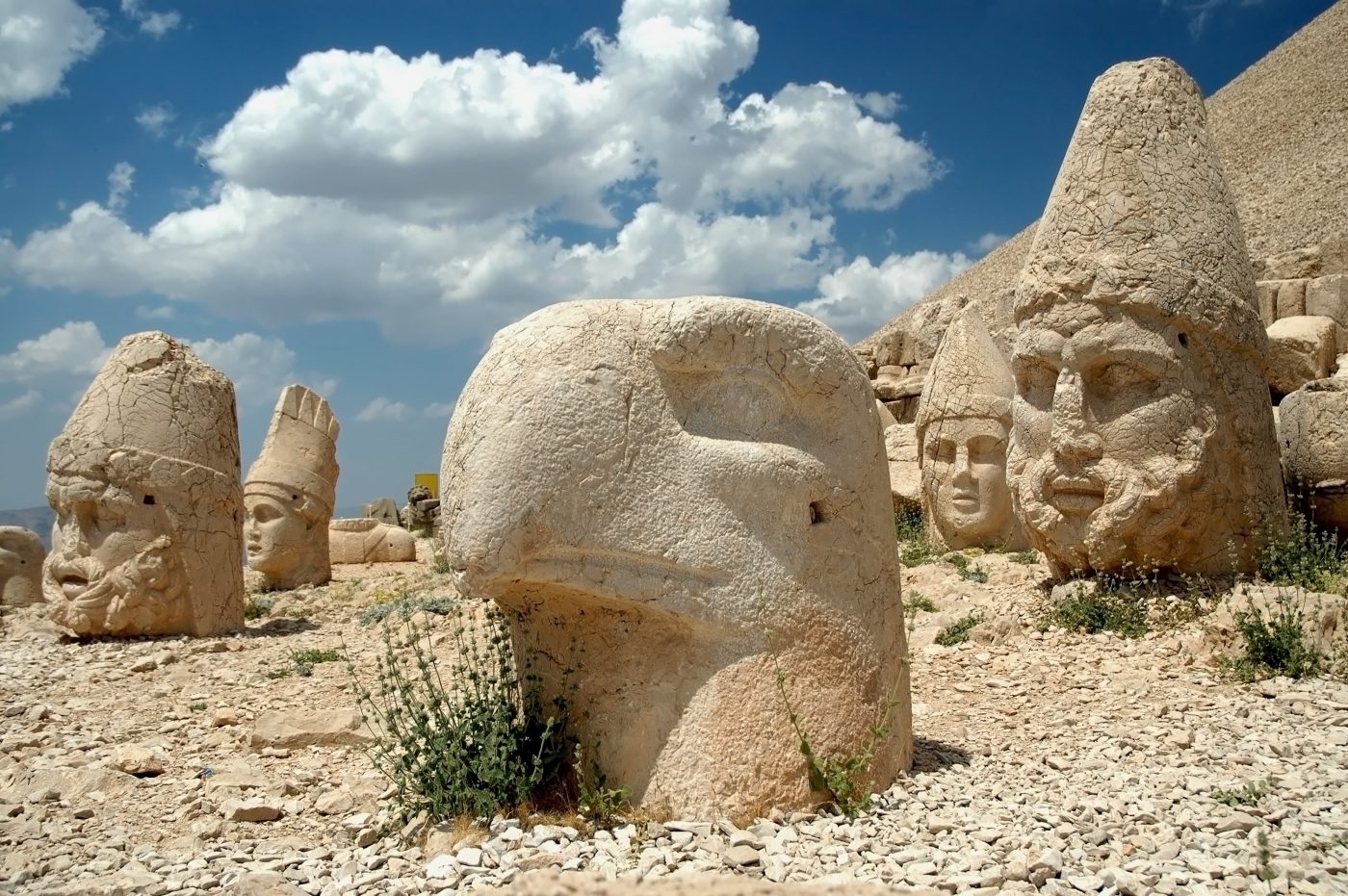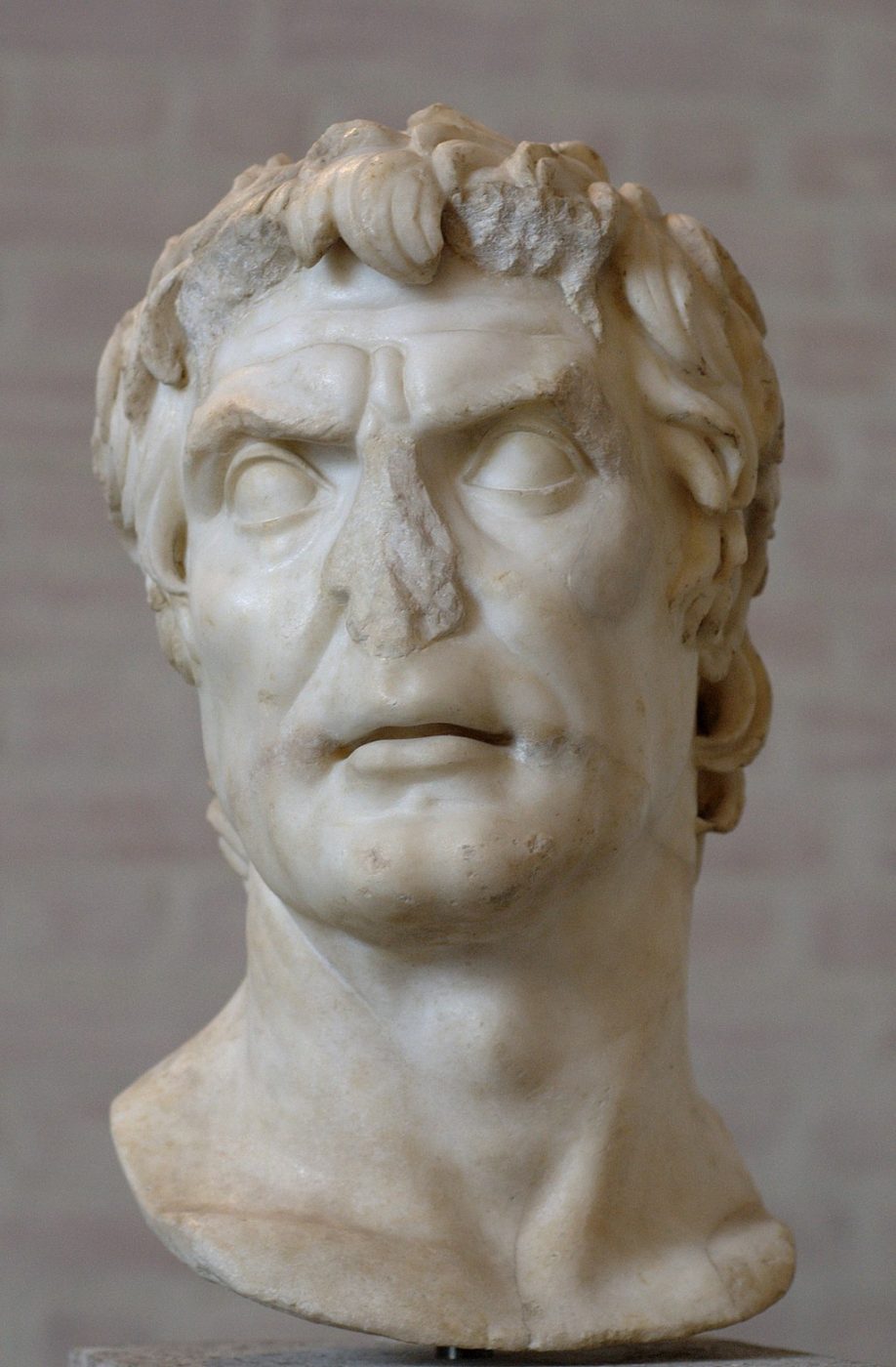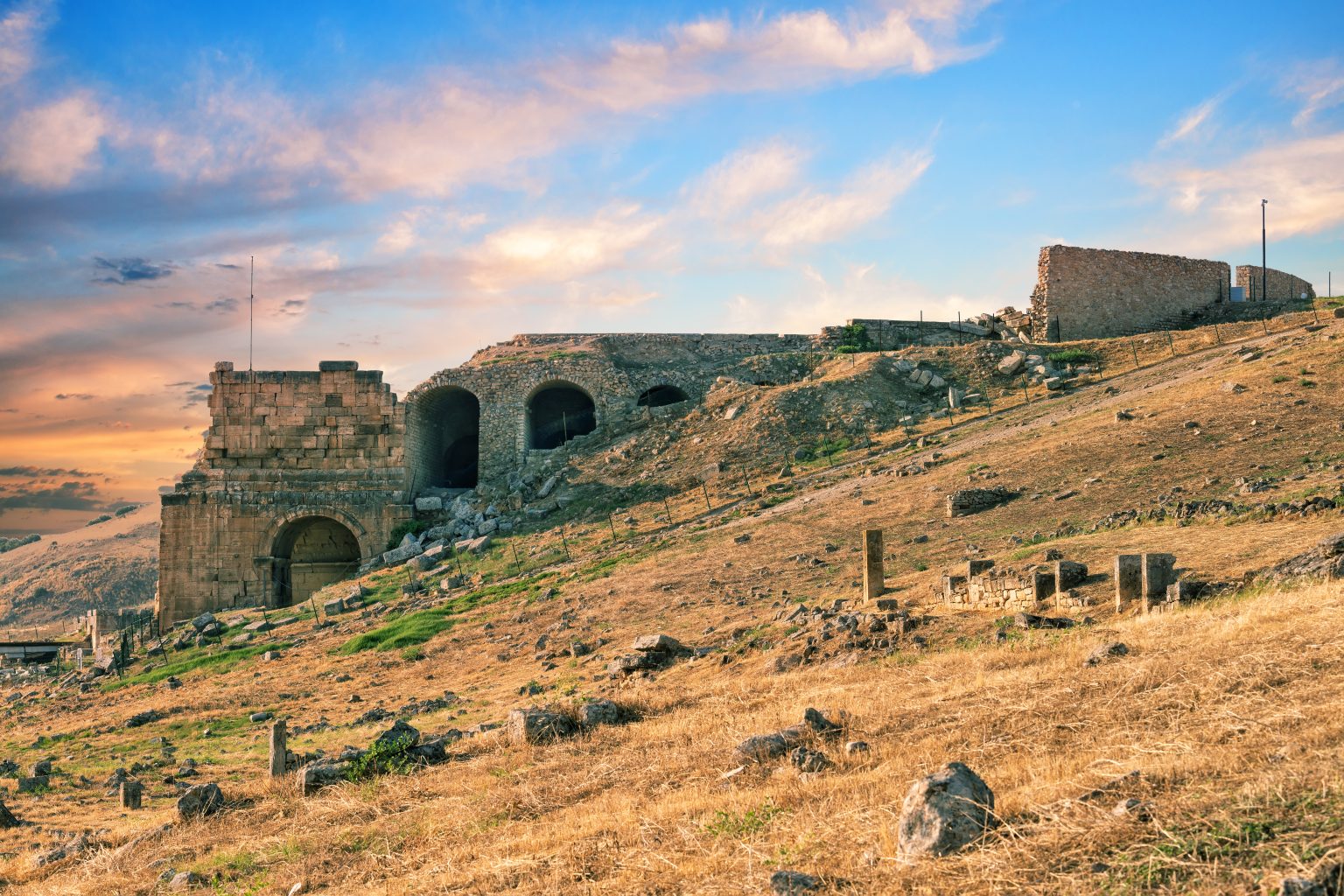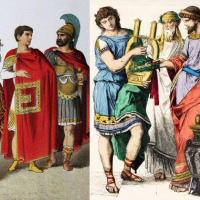Anatolia, a vast and historically rich region, now modern-day Turkey, has been a melting pot of civilizations for millennia. Among the many empires that have left their mark on this land, the Romans stand out for their profound and lasting influence. The Roman presence in Anatolia is a testament to the empire’s expansive reach and its ability to integrate diverse cultures. But what did this influence mean for both the Romans and the Anatolians? Let’s delve into two perspectives to uncover the layers of this historical tapestry.
Roman Perspective: A Rich and Integrated Province
From the Roman viewpoint, Anatolia was a treasure trove. Its fertile lands, strategic location, and abundant resources made it a valuable addition to the empire. The region was swiftly integrated into the Roman economic and administrative systems. Cities like Ephesus and Antioch flourished under Roman rule, becoming centers of trade, culture, and governance.
One of the advantages of this integration was the economic prosperity it brought. The Roman road system, known for its efficiency, was extended into Anatolia, facilitating trade and movement. This not only boosted the local economy but also strengthened the ties between Anatolia and the rest of the Roman world.
However, challenges were inevitable. The vastness and diversity of Anatolia meant that the Romans had to deal with a myriad of local customs, beliefs, and power structures. While the Romans were adept at integrating new provinces, ensuring loyalty and maintaining order in such a diverse region was no small feat.
Anatolian Perspective: A Blend of Native and Roman Traditions
For the Anatolians, the Roman conquest was not just a change in political leadership; it was a cultural transformation. The Romans brought with them their architecture, language, and legal systems. Over time, these Roman elements blended with local Anatolian traditions, creating a unique cultural mosaic.
This synthesis had its advantages. The Anatolians benefited from Roman administrative efficiency, infrastructure, and security. The Pax Romana, or Roman Peace, ensured that the region enjoyed relative stability and prosperity.
Yet, challenges arose from this cultural amalgamation. While many Anatolians embraced Roman ways, there were those who resisted, holding onto their native traditions and identities. This tension between the old and the new, the native and the foreign, played out in various ways across the region.
Conclusion: A Historical Dance of Integration and Identity
The Roman influence in Anatolia is a story of integration and identity. From the Roman perspective, Anatolia was a rich province that enhanced the empire’s might. For the Anatolians, it was a period of blending and balancing their native traditions with the Roman way of life. This dance between two cultures left an indelible mark on the region, shaping its history and legacy.
Understanding the Roman influence in Anatolia is crucial, not just for historians but for anyone keen on grasping the intricate web of human civilizations. It reminds us of the power of empires to shape regions and the resilience of local cultures to retain their essence amidst change.
Nemrut Dağı: A Majestic Fusion of Cultures Under Roman Influence
Perched atop the Taurus Mountains in southeastern Anatolia, the Nemrut Dağı monument is a grandiose testament to the Roman influence in the region. Commissioned by King Antiochus I Theos of Commagene in the 1st century BCE, this site uniquely captures the confluence of Roman, Persian, and Anatolian cultures.

Antiochus I Theos: A King at the Crossroads
Antiochus I, ruling the small kingdom of Commagene, found himself at the intersection of great empires: the Romans to the west and the Parthians to the east. Seeking to solidify his reign and legacy, he embarked on an ambitious project on Mount Nemrut.
The Monument: A Pantheon of Gods
At Nemrut Dağı, colossal statues of gods were erected, representing a blend of deities from different traditions. Here, Zeus-Oromasdes combined Greek and Persian divinities, while statues of Antiochus himself stood alongside these deities, symbolizing his desire for eternal association with the gods.
Roman Influence and Recognition
While the monument showcased a blend of cultures, the Roman influence was undeniable. The Hellenistic art style, popularized by the Romans, was evident in the sculptures. Moreover, Antiochus’s decision to include himself among the gods was reminiscent of Roman emperors’ deification practices.
The Romans, recognizing the strategic importance of Commagene as a buffer against the Parthians, initially supported Antiochus. This mutual relationship further facilitated the flow of Roman artistic and cultural influences into the region.
Perge: The Jewel of Roman Anatolia
Nestled in the southern coast of Anatolia, the ancient city of Perge stands as a testament to the profound Roman influence in the region. Founded long before the Romans set foot in Anatolia, Perge’s golden age came under Roman rule, transforming it into a bustling metropolis adorned with grand structures and avenues.
A City Reborn Under Roman Rule
While Perge was already an established city, its true transformation began in the 1st century BCE when it came under Roman control. The Romans, with their unparalleled expertise in urban planning and architecture, embarked on extensive construction projects. Grand colonnaded streets, a vast agora, a theater, and a stadium soon graced the city, reflecting the architectural grandeur typical of Roman cities.

The Nymphaeum of Perge
One of the most iconic structures in Perge was the Nymphaeum, a monumental fountain dedicated to the nymphs. Built during the reign of Emperor Hadrian, this structure was not just an architectural marvel but also a symbol of the city’s prosperity under Roman rule.
Perge’s Legacy in Christian History
Beyond its architectural wonders, Perge holds a special place in Christian history. It was in this city that Saint Paul and his companion Barnabas began their first missionary journey, as mentioned in the Acts of the Apostles. The Roman peace (Pax Romana) facilitated such travels, allowing the spread of Christianity across its vast territories, including Anatolia.
Lucius Cornelius Sulla: The Roman General Who Shaped Anatolia’s Fate
In the annals of Roman history, few figures loom as large as Lucius Cornelius Sulla. While his exploits spanned the vast Roman Empire, his involvement in Anatolia during the First Mithridatic War left an indelible mark on the region.

The Backdrop: Rising Tensions in Anatolia
By the late 2nd century BCE, tensions between Rome and the Kingdom of Pontus in northern Anatolia were escalating. At the heart of this conflict was Mithridates VI, the ambitious king of Pontus, who sought to challenge Roman dominance in the region.
Sulla’s Anatolian Campaign
In 88 BCE, Sulla was appointed to lead the Roman campaign against Mithridates. Landing in Ephesus, he quickly mobilized his forces. Despite facing challenges, including a lack of supplies and the initial successes of Mithridates, Sulla’s military genius shone through. He secured a series of victories, pushing Mithridates’s forces back.
The pivotal Battle of Chaeronea, where Sulla’s legions faced off against Mithridates’s vast army, showcased Sulla’s tactical brilliance. The Romans emerged victorious, solidifying their hold on key parts of Anatolia.
The Legacy of Sulla in Anatolia
Beyond the battlefield, Sulla’s influence in Anatolia was profound. He re-established Roman authority, ensuring that cities like Ephesus and Pergamon remained loyal to Rome. His actions during the campaign laid the groundwork for the eventual Roman annexation of large parts of Anatolia.
Apollonius of Perga: Anatolia’s Genius Under Roman Skies
In the ancient city of Perga, nestled in the heart of Anatolia, a mind brilliant enough to shape the course of mathematical thought was born. Apollonius, often referred to as “The Great Geometer,” lived during the 2nd century BCE, a time when Anatolia was increasingly coming under Roman influence.
A City of Learning: Perga under Rome
Perga, a city in the region of Pamphylia, flourished under Roman rule. The Pax Romana ensured that cities like Perga became centers of learning, trade, and culture. It was in this vibrant environment that Apollonius grew up, absorbing the combined knowledge of Anatolian and Roman scholars.
Conic Sections and the Legacy of Apollonius
Apollonius’s most significant contribution to mathematics was his work on conic sections. His eight-volume treatise, “Conics,” delved deep into the properties of ellipses, parabolas, and hyperbolas. This work laid the foundation for future mathematicians and astronomers, including the likes of Kepler and Newton.
Beyond “Conics,” Apollonius made pioneering contributions to astronomy, proposing theories on planetary motions that would be referenced by later astronomers in the Roman world and beyond.
An Anatolian Luminary in a Roman World
While Apollonius was undoubtedly a product of Anatolian intellect, the Roman influence in the region provided a conducive environment for scholarly pursuits. The interconnectedness of the Roman Empire meant that Apollonius’s works were disseminated far and wide, influencing generations of thinkers across the vast expanse of the empire.
1. How did the Roman legal system impact Anatolia?
The Roman legal system, known for its comprehensive codes and principles, was introduced to Anatolia upon its annexation. This system brought about standardized laws, which replaced or supplemented existing local customs. The Roman concept of “civitas” granted certain cities self-governing rights, fostering a sense of unity while allowing for regional autonomy. This legal integration facilitated trade, governance, and cultural exchange, further solidifying Roman influence in the region.
2. What role did the Roman military play in Anatolia?
The Roman military played a pivotal role in both the conquest and subsequent stabilization of Anatolia. Strategically placed forts and garrisons ensured the maintenance of the Pax Romana, or Roman Peace, across the region. Additionally, the military facilitated the construction of roads and infrastructure, enhancing connectivity and trade. The presence of Roman legions also deterred external threats, ensuring a prolonged period of stability and prosperity in Anatolia.
3. How did Roman religious practices influence Anatolian spirituality?
Roman religious practices, characterized by a pantheon of gods and goddesses, often merged with local Anatolian deities. Temples dedicated to Roman gods were constructed, and existing ones were often Romanized. The Imperial Cult, which venerated the emperor, also found its way to Anatolia, with temples dedicated to emperors. Over time, a syncretic blend of Roman and Anatolian spiritual practices emerged, enriching the region’s religious tapestry.
4. How did the Roman economy influence trade and commerce in Anatolia?
The Roman economy significantly boosted trade and commerce in Anatolia. The introduction of a standardized currency, the Roman denarius, facilitated trade across the empire. The construction of roads, particularly the Via Egnatia, connected Anatolia to the broader Roman trade network. Cities like Ephesus became bustling trade hubs, benefiting from both land and maritime trade routes.
5. Were there any notable Anatolians who rose to prominence in the Roman Empire?
Yes, several Anatolians rose to prominence within the Roman Empire. One notable figure is Emperor Galerius, originally from Dacia (modern-day Turkey). He served as a Roman emperor from 305 to 311 AD and played a crucial role in the early stages of the Christianization of the empire. His Edict of Serdica granted Christianity the status of “religio licita”, a recognized and lawful religion.



